Sweden / Konungariket Sverige – Let’s explore here
What’s it like in Sweden?
Based in Scandinavia in the north of Europe, Sweden is dominated by forests and many lakes, some of which are the largest in Europe. Being the fifth largest county in Europe, it has a very long coastline, along which most people live. To the west of the country is a long mountain range, the Scandinavian Mountains, that separates it from Norway. Its highest point is Mount Kebnekaise, in the far north of the country, at 6,877 ft (2,096m) above sea level.
The population is about 10 million, about one in four of whom live in the capital, Stockholm. Because it’s such a large country, and full of forest, you often find yourself thinking, ‘where is everyone?’ This is especially true in Stockholm, which, when we were there, appeared to be almost empty … beautiful but empty!
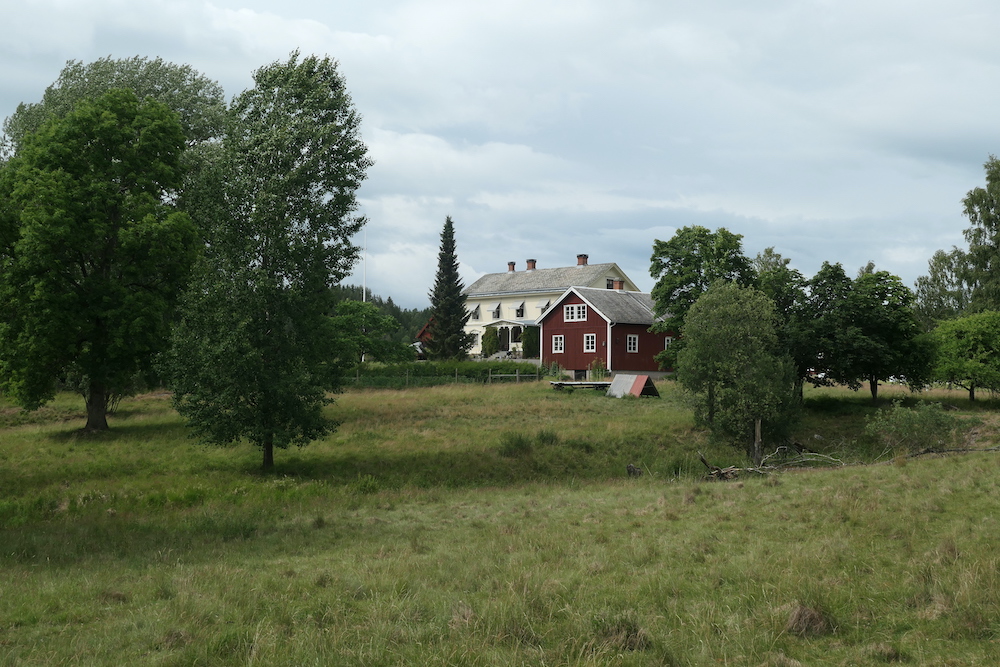
A bit about the history of Sweden
Early History and Viking Age
Sweden’s history dates back to prehistoric times, with evidence of human settlement going as far back as the Stone Age. By the 8th to 11th centuries, Sweden was part of the Viking Age, a period marked by the expansion of Swedish warriors, traders and settlers across Europe, particularly in the east. During this time, Sweden was a collection of loosely connected tribes, but it began to consolidate into a more unified kingdom.
Medieval Period and the Rise of the Kingdom
In the 12th century, Sweden emerged as a more unified kingdom under the rule of monarchs, most notably King Gustav I Vasa, who reigned in the 16th century. His reign marked the beginning of the Swedish Empire. Sweden embraced Christianity in the early medieval period, and by the 13th century, it was a strong feudal kingdom with expanding territories.
The Swedish Empire
During the 17th century, Sweden reached its height as a military power, establishing the Swedish Empire. Under kings like Gustavus Adolphus, Sweden expanded its territory to include parts of modern-day Finland, Russia, Germany, and the Baltic States. The empire played a significant role in European affairs, particularly in the Thirty Years’ War (1618–1648), where Sweden was a key Protestant power.
However, the empire began to decline in the early 18th century after defeats in the Great Northern War (1700–1721), leading to the loss of many territories, including those in the Baltic region.
The Age of Liberty and Constitutional Changes
In the 18th century, Sweden underwent political changes with the Age of Liberty, a period characterised by parliamentary control and a reduction in the monarchy’s power. However, the monarchy was restored in the early 19th century after the Napoleonic Wars. Sweden’s involvement in the wars led to the acquisition of Norway in 1814, which it ruled in a personal union until 1905, when Norway peacefully gained independence.
Industrialisation and Social Change
In the 19th century, Sweden underwent industrialisation, which transformed its economy. The country saw significant social changes, including the development of a welfare state. Sweden maintained neutrality during both World Wars, though it was affected by the conflicts, especially during World War II, when it was surrounded by belligerent nations.
Modern Sweden and the Welfare State
After World War II, Sweden became known for its strong social welfare system, focusing on universal healthcare, education and other public services. The country experienced significant economic growth during the mid 20th century and became one of the world’s wealthiest nations. Sweden also pursued a policy of neutrality in international conflicts, though it became increasingly involved in global diplomatic and humanitarian efforts.
Sweden Today
Today, Sweden is a parliamentary democracy with a constitutional monarchy. It is known for its high standard of living, progressive policies and active participation in international organisations such as the European Union and the United Nations. Sweden maintains a reputation for its strong economy, technological innovations and commitment to environmental sustainability.


Sweden road trip
We’ve created a blog for our road trip in Sweden. You may find it helpful, and you may pick up some tips, or more likely mistakes not to make that we’ve made 😉 Our Swedish road trip was part of a much larger European road trip.
The south
For our Swedish road trip we travelled from Copenhagen in Denmark, across the Great Belt Bridge towards Malmo. We were stopped at the border by the Swedish police and breathalysed – more on that in the blog!
Heading north east, we made our way though the forests to Växjö to see how local people live in Sweden. Unfortunately it rained and rained and rained some more!
The capital
So we headed up towards the capital, Stockholm, and got caught in the heaviest rain we’d ever experienced on a motorway, where everyone came to complete stop! Stockholm itself is lovely, and the underground is great.
The south west
From there we headed west to the rural area of Prästhög near Lake Vänern, the largest lake in the country. We stayed over in a lovely farmhouse, and the owner was really welcoming and friendly. It was here that we learned a lot about Sweden, the culture and its history, and how people felt about the EU. We loved it in Prästhög, and would gladly return when a bit sunnier!
Finally we tried to escape the rain, and headed onto Norway.
The far north
We also came back to Sweden after our first (failed) attempt to get to Nordkapp, at the top of Europe. The roads and tunnels were closed, and so as it was sunny in Sweden, we re-entered the country. We stayed just over the border in Karesuando, and it was 26°C, the hottest place in Sweden at the time! It was also mosquito and horse-fly hell! … adding to our opinion of Sweden unfortunately!
Eventually we realised that we had in fact met quite a number of really interesting people in Sweden, most of whom were very well read and spoke English very well. We improved our knowledge a lot of this intriguing and beautiful country; if only it didn’t rain so much!
Map of our road trip through Sweden
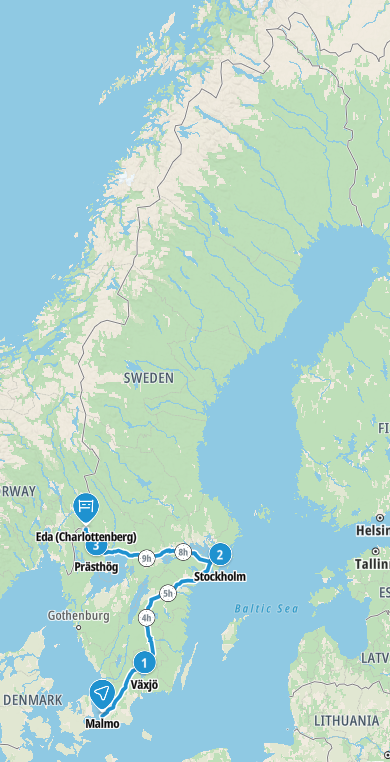
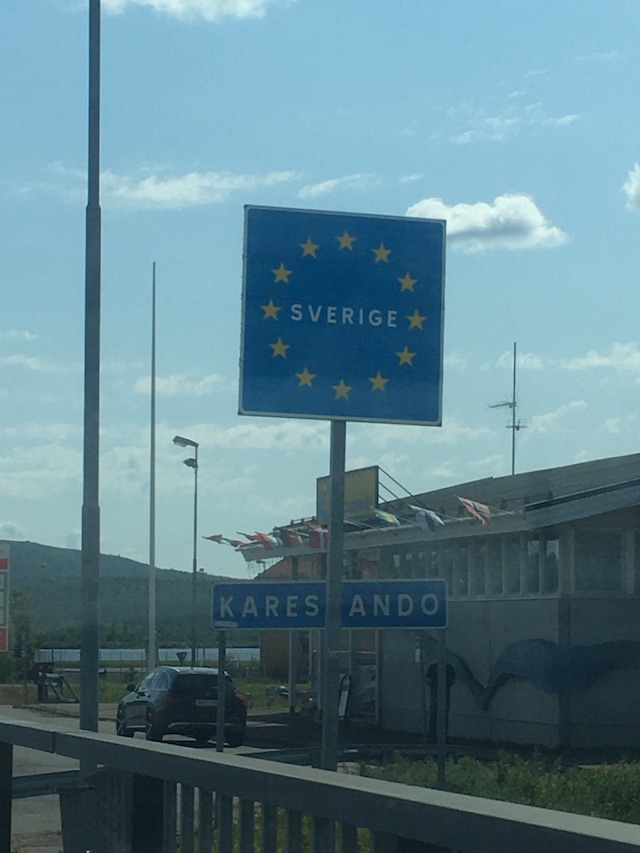
Our favourite places in Sweden
These are some of the best places that we explored on our road trip through Sweden. We’ve put them in alphabetical order.
Prästhög
The best stay we had though without a doubt was in Prästhög – in the bizarrely named ‘Sheep Inn’. Not bizarre for Yorkshire, England but definitely so for sorth west Sweden! The owner was a great character, really interesting and engaging. Plus he provided a fully stocked fridge freezer (see below)! It’s set in amongst the forest and is well worth the effort should you be in the area!
Prästhög is a small, scenic village, nestled in the municipality of Höör in Skåne County. Known for its tranquil rural atmosphere, Prästhög is surrounded by picturesque landscapes of forests, fields, and nearby lakes. The area is perfect for nature lovers, and anyone who likes hiking, cycling, and birdwatching.
The historical charm of Prästhög is evident in its traditional Swedish countryside architecture and peaceful environment. Though small, the village serves as a lovely spot for anyone seeking a quiet escape, while still being within easy reach of larger cities like Malmö, making it a perfect blend of rural serenity and accessibility.

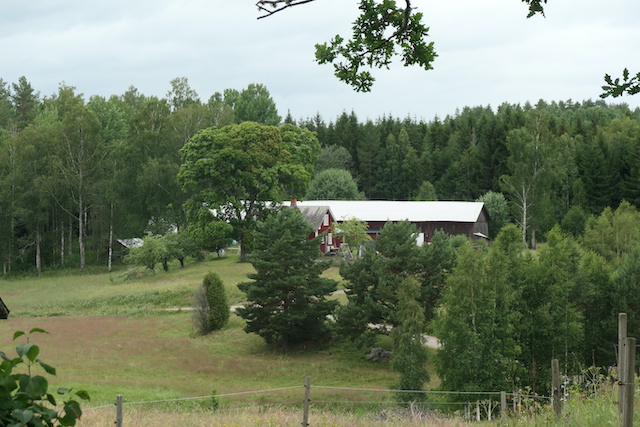

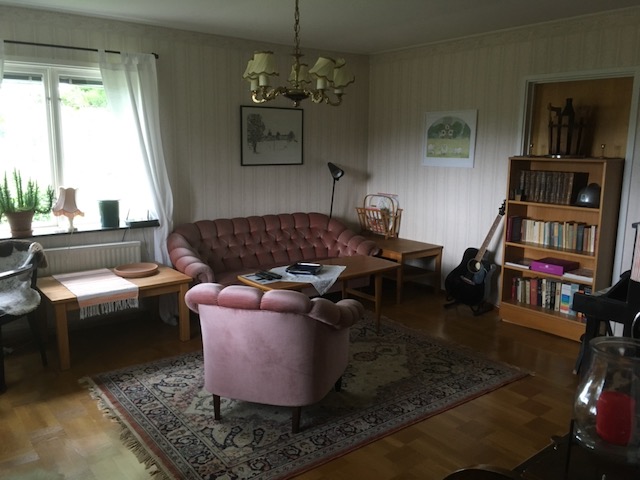


Stockholm
It absolutely bucketed down with rain when we were in Stockholm, only to pause for an hour or so, which is when we tried to capture some of these images! The population is over a million, yet they were all in hiding when we were there!!
One interesting point was that the underground had been dug out and left hewn – leaving the bare rock, which was then painted in various colours!
Stockholm is a dynamic city spread across 14 islands connected by over 50 bridges, making it a stunning waterfront destination. Known for its rich history, the city boasts landmarks like the royal palace, Gamla Stan (Old Town), and the Vasa Museum, home to a 17th-century ship.
Stockholm is also a hub of modern design and innovation, with a thriving arts scene, chic boutiques, and trendy cafés. There’s also lots of green spaces that offer peaceful escapes within the city. With a perfect blend of culture, history, and nature, Stockholm is a must-visit Scandinavian gem.
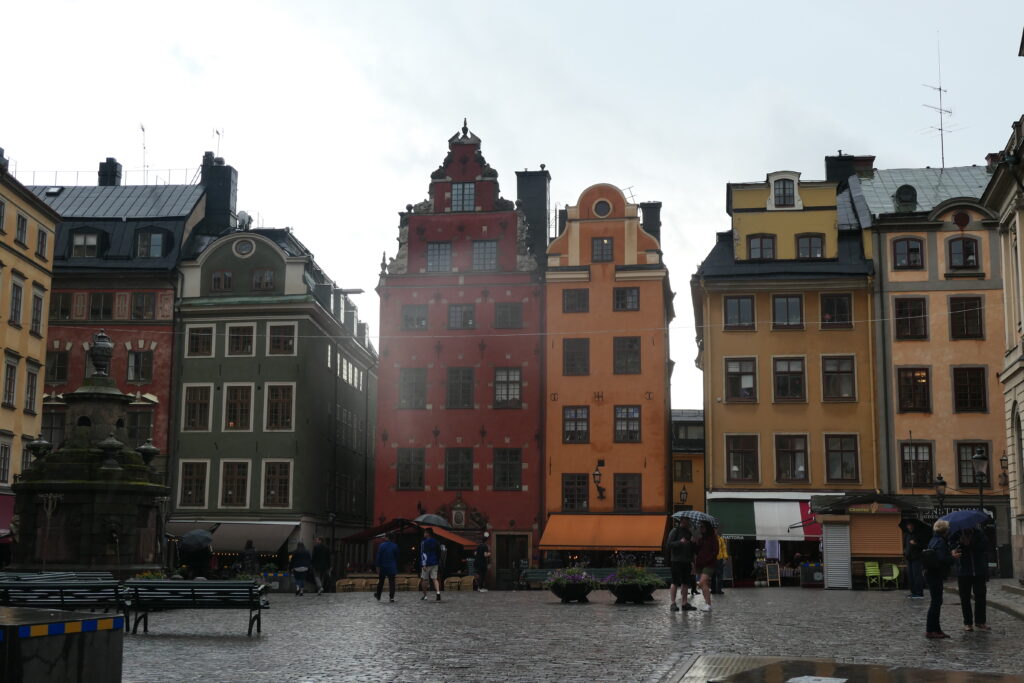
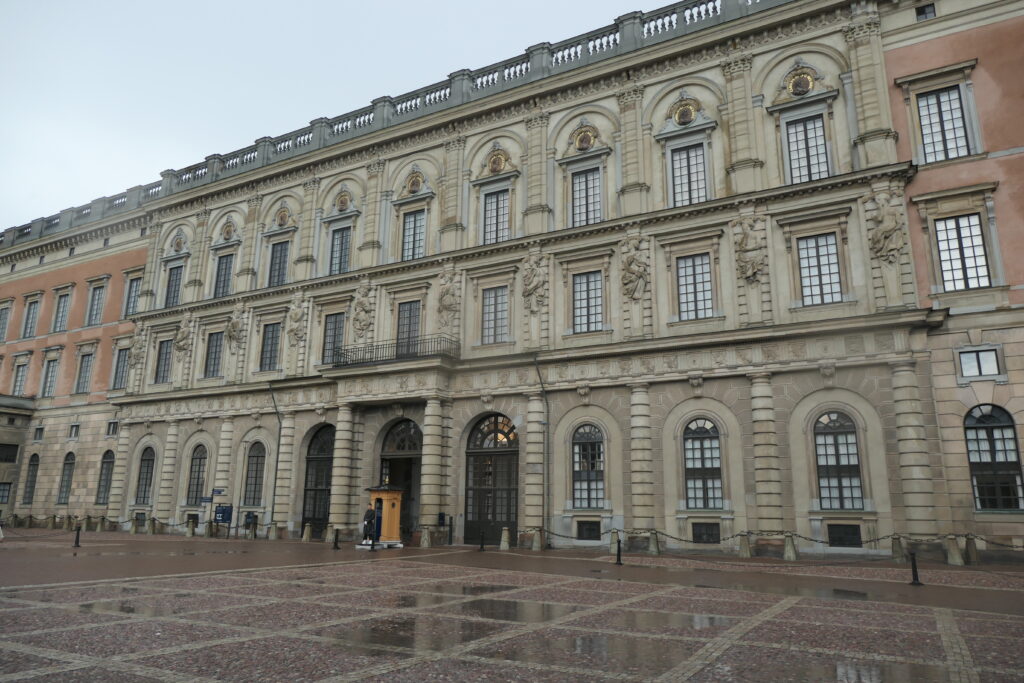
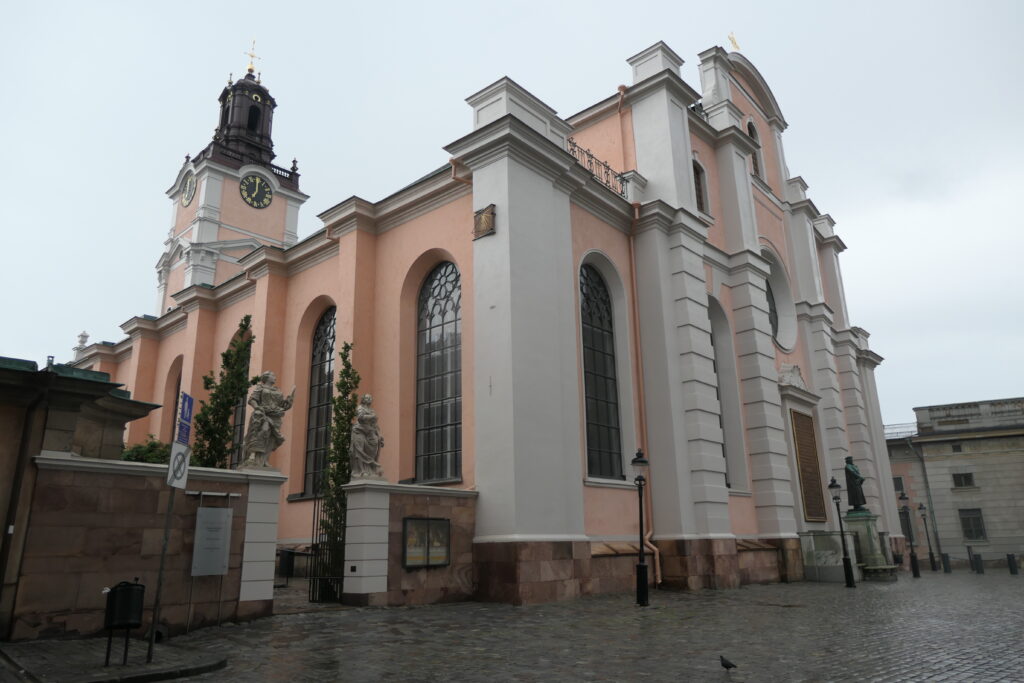

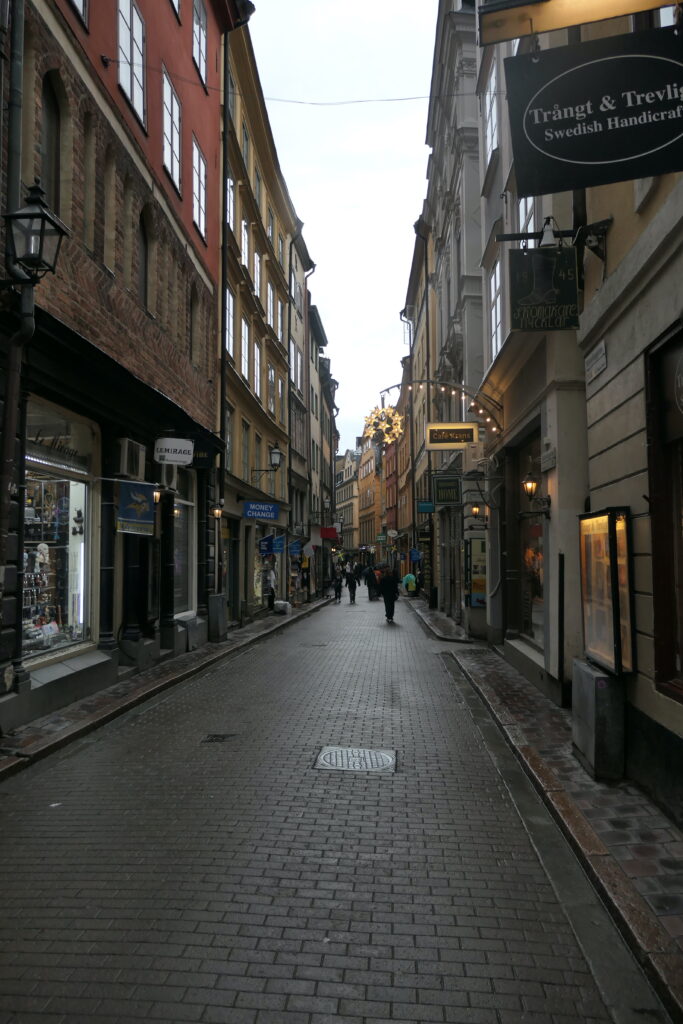
Värmland
Värmland was definitely our favourite part of Sweden, although may be because it was the only place where the rain let up!! Mostly a set of disparate rural communities, the people we met were super friendly and eager to discuss all kind of issues! There appeared to be quite a number of similarities with farm holders in Yorkshire.
Värmland is located in central Sweden, and is a beautiful province known for its pristine nature and outdoor activities. Characterized by vast forests, crystal-clear lakes, and winding rivers, Värmland offers endless opportunities for hiking, fishing, and canoeing. The region is also rich in cultural heritage, with charming villages, historic sites, and local traditions that reflect Sweden’s past.

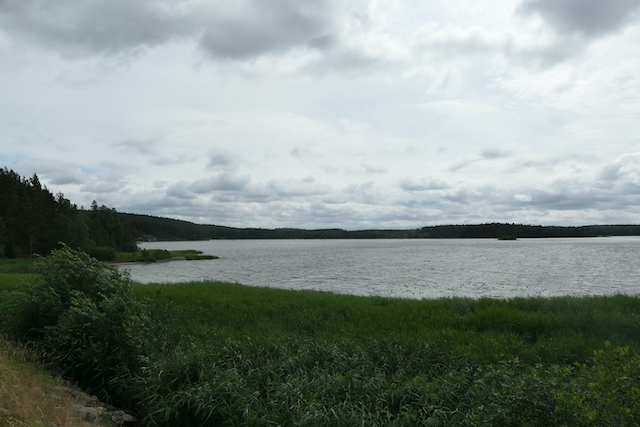



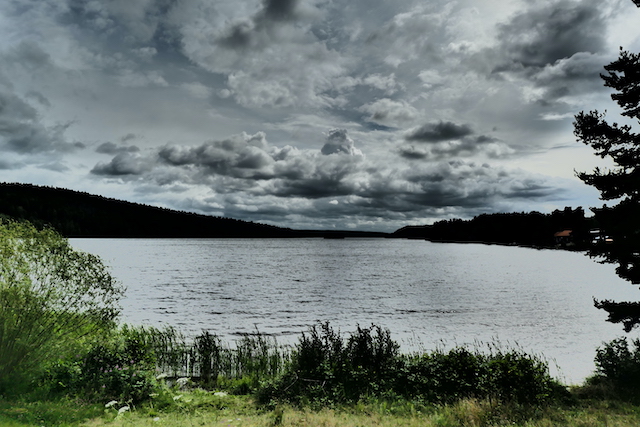
Växjö
Although a fairly quiet place on the day we were there, we were told that there is a university here, and thus a vibrant atmosphere. Apparently it’s a city, although there’s only 60,000 people who live there, so quite a small city – where is everyone? These photos were taken on a Sunday morning, which perhaps explains the lack of students 😉 We particularly liked the deep red smiling cathedral!
Växjö is located in the southern part of Sweden in the Småland region. It’s a charming city known for its vibrant cultural scene and commitment to sustainability. Surrounded by lush forests and serene lakes, Växjö is often referred to as the ‘City of Trees’, with its numerous parks and green spaces.
The city also offers a rich history, showcased in attractions like the Växjö Cathedral and the Småland Museum. Växjö is widely recognized for its innovative approach to environmental sustainability, being one of the greenest cities in Europe.
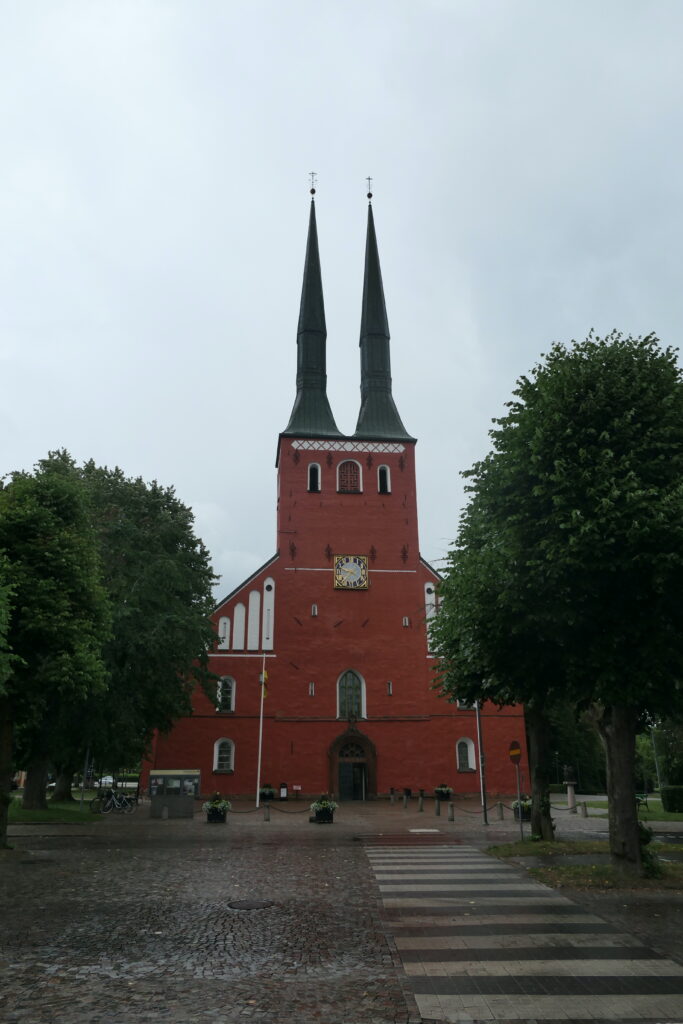
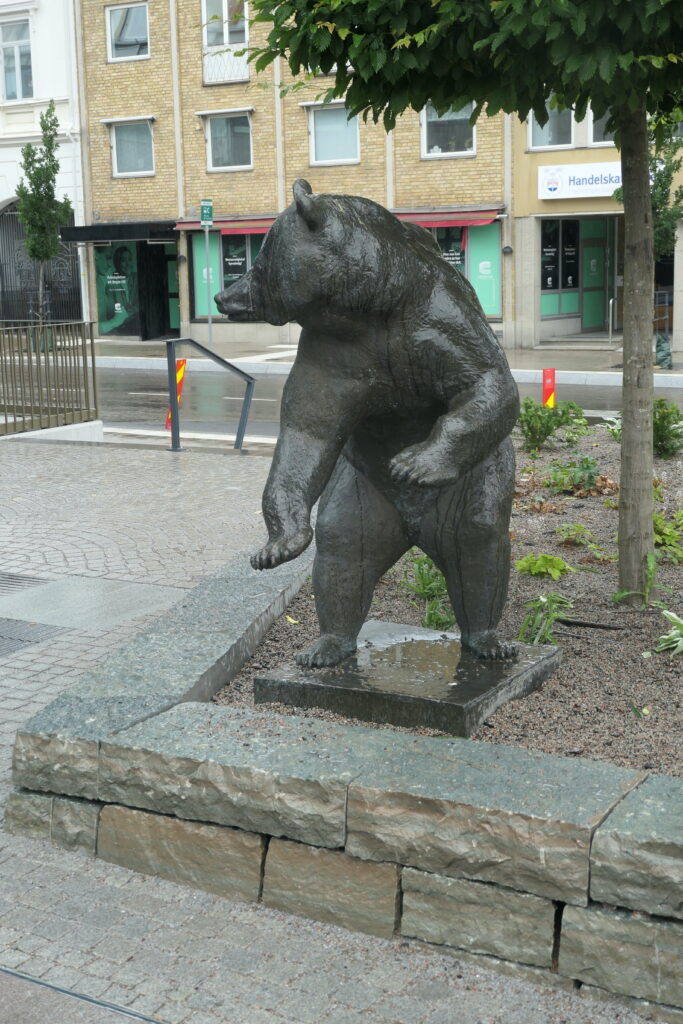
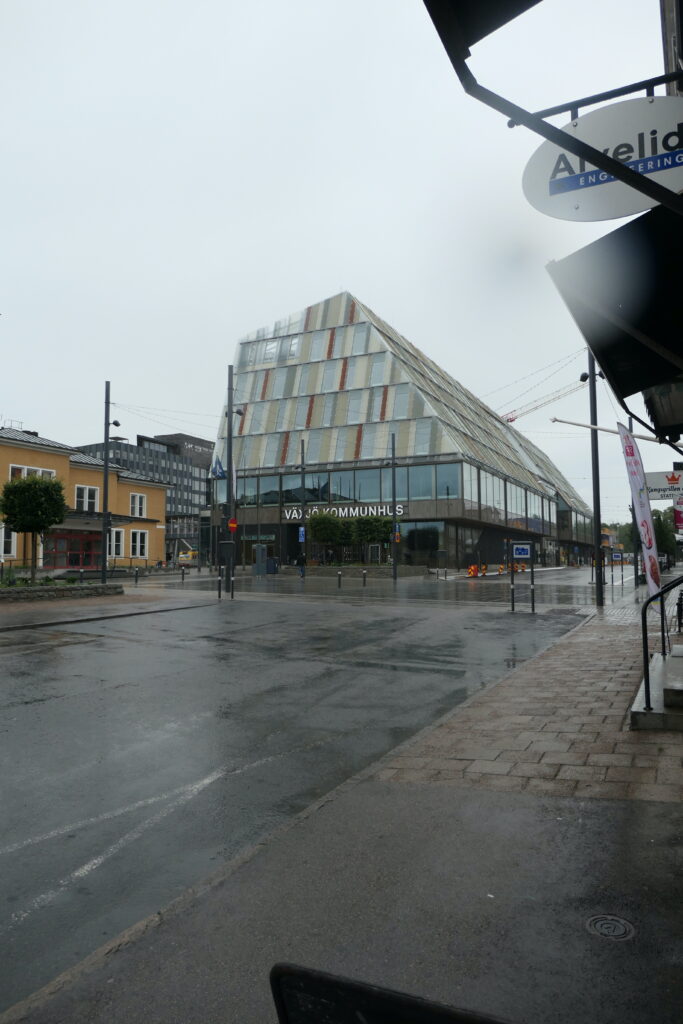
What’s it like to drive in Sweden?
As with almost everywhere on the continent of Europe, they drive on the right hand side of the road in Sweden.
In the main, we found driving to be very sedentary and ordered in Sweden. Everyone sticks to the rules, and everyone gives everyone space and only a couple of times did we experience any lane-hogging like you get in the UK. There is very little speeding, and road signage is excellent. That said, the road network isn’t exactly extensive, despite the size of the country. You do however see this sign a lot! 🙂
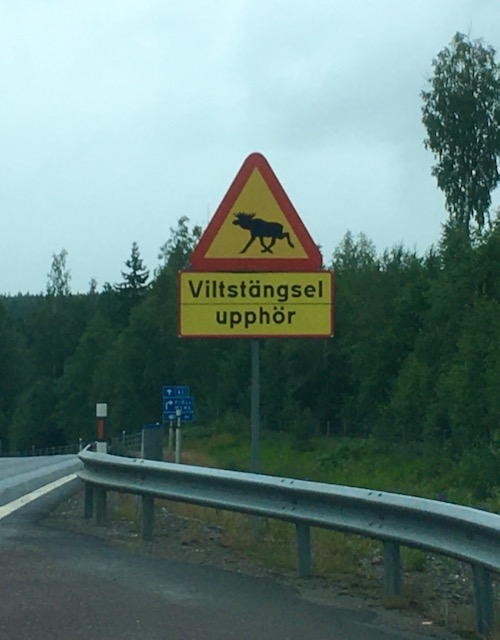
What’s it like to drive in Stockholm?
Driving in Stockholm is not the same as the rest of the country. Mainly due to the volume of traffic. But also because Stockholm is on a set of islands, and so there are many corkscrew type roads taking you from the main roads to the suburbs. You’d think that you could easily get lost, but we found that if you missed one, the next would rapidly take you back to the correct place … nice!
Driving in the rain in Sweden?
So driving seemed pretty simple in Sweden, however … the RAIN!!!!! OMG the rain! At times it doesn’t seem to stop, and sometimes, like when we drove into Stockholm from the south, the rain is so excessive, it’s literally like driving through a waterfall!
Extremely dangerous driving conditions occur, such that everyone on the motorway brakes at the same time due to not being able to see out of the windscreen at all … not even slightly! Just incredible! How there weren’t more accidents we’ll never know! In that instance, everyone stopped dead on the motorway for approximately two whole minutes until the downpour eased off!
Driving on the main roads in Sweden
AND ALSO … the forests!!! Wow, we’ve never seen so many trees in our lives … just unbelievable! I mean, I’m a definite tree lover, but wow … lots, more than you can imagine! Because of the size and flatness of the country, and how extensive the forests are, the roads can be very straight and very long, with little differentiation either side of the road to break the monotony. As such, long distance driving can, at times, become slightly laborious. You almost need to speed up and slow down periodically just to break the monotony!
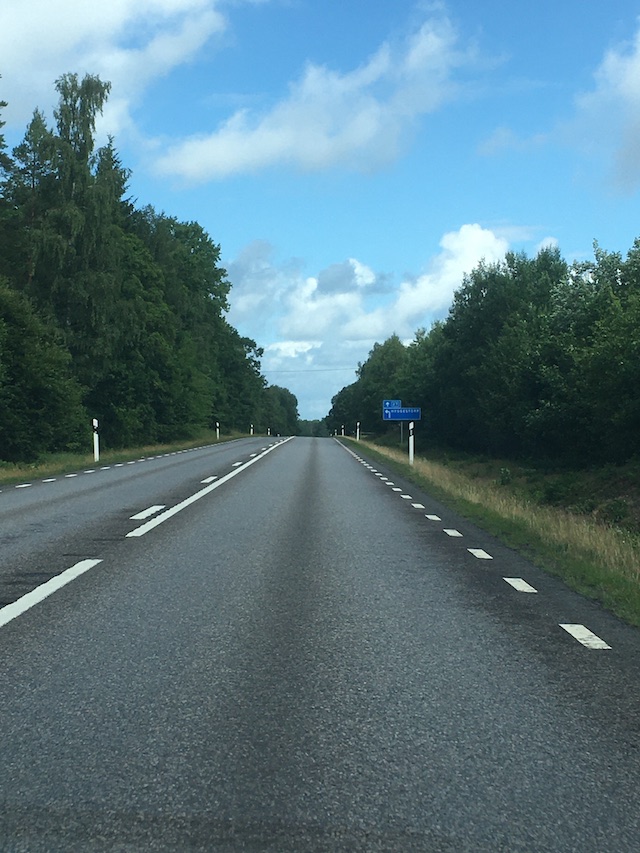

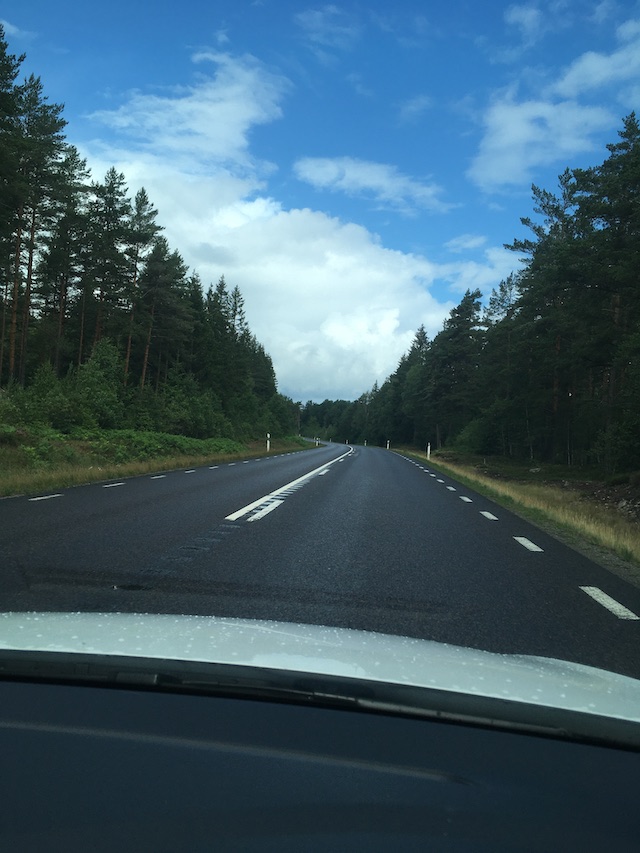
Driving in the forests in Sweden
However, driving in the forests … well now you’re talking. Most roads in the forests are gravel tracks, so lots of tiny stones to deal with, and many of the tracks are quite narrow, so travel slows down quite quickly. However, some of the beautiful deep red houses and barns and farms that you see hidden in the forests are simply beautiful! It’s definitely worth going off road in the north and west of the country for this reason. Plus you can bathe in the thousands of lakes that suddenly appear out of nowhere.
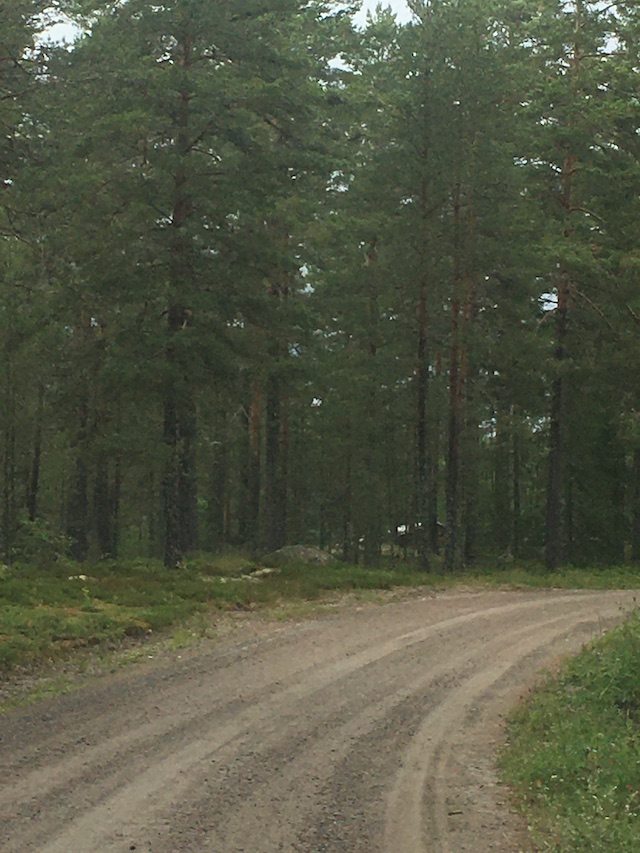
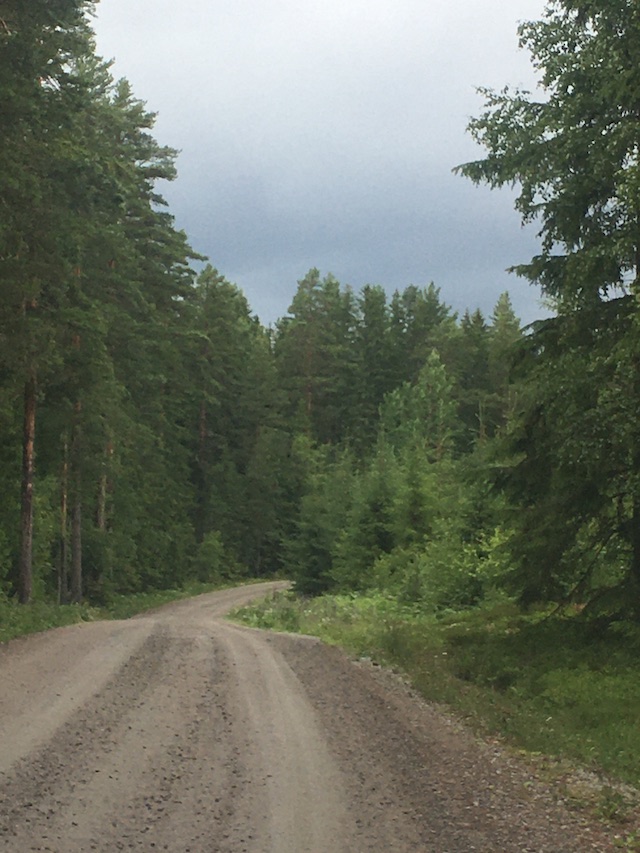
Driving into Sweden from Denmark
Beware that drink driving in Sweden is taken very seriously, and the limits are much lower than in the UK. When entering Sweden you may be asked to take a breathalyser test by customs officials … I was! More on that in the blog!!
Driving between mainland Denmark and Sweden can either be done by Ferry or via the Øresund Bridge. Tickets for the bridge can be bought online in advance, or at toll booths. Tickets for the Ferry can be bought from Forsea ferries or StenaLine. One-way tickets are fairly similar in price (as of June 2023).
Do you require an international driving permit in Sweden?
We’ve created a dedicated page to driving abroad, which answers this question, and more, which you might find helpful.
Can you use your UK driving license when driving through Sweden?
We’ve created a dedicated page to driving abroad, which answers this question, and more, which you might find helpful.
Do I need a carnet de passages to drive in Sweden?
We’ve created a dedicated page to driving abroad, which answers this question, and more, which you might find helpful.
What are the speed limits in Sweden?
The speed limits for cars in Sweden are:
- 20 mph (30 km/h) for urban driving
- 30 mph (50 km/h) outside of built up areas
- 60 mph (100 km/h) on dual carriageways
- 75 mph (120 km/h) on motorways
What currency do they use in Sweden?
In Sweden they use the Swedish Krona. The use of credit / debit cards is now very widespread, to the extent that many places no longer accept cash. Traveller’s cheques are accepted. There are lots of ATMs.
You should make yourself aware of the amount that your bank charges you for using credit and debit cards abroad. Often credit cards are cheaper for purchasing items directly, and for withdrawing cash from ATMs.
What language do they speak in Sweden?
They speak Swedish in Sweden, although English, and to a lesser extent German is also widely spoken, in particular by younger generations.
What time zone is Sweden in?
Remember, when you’re planning your next trip to take a look at what time zone it’s in.
Do I need a visa to visit Sweden?
We’ve created a dedicated, more comprehensive page on visas, which you should find helpful. Check it out!
Camping in Sweden
Due to the incessant rain for the entire duration of our time in Sweden, we couldn’t bring ourselves to camp in our tent on our first trip in Sweden, only to have it soaking wet in the car. Also, of the sites that we did find by lakes in the north, mosquitos were abundant, to put it mildly!
Because of this we sourced some quality, affordable studio-flat type accommodation, which, surprisingly is readily available. We were under the impression that Sweden was expensive, but quite to the contrary, compared to Denmark and Norway, it was surprisingly inexpensive. In fact, it was considerably cheaper that the UK!
On our second trip to Sweden, after falling to reach Nordkapp, we stayed in a campsite called Sandlöfs camping. The owners were really welcoming and chatty. It was lovely and warm, and the site was super flat for tents. However, it was mosquito and horse-fly hell! Gladly our tent has mesh windows, so the breeze could get in but the flies couldn’t. As soon as you left the tent though – it was like a free for all! Best avoided unfortunately!
Is wild camping legal in Sweden?
Yes, wild camping is fine in Sweden, in particular around the lakes. We found that in the South of the country, there didn’t appear to be that many opportunities for wild camping, but in the lake lads in the North and West, there were plenty. Beware the mosquitos though – ensure you have mesh windows on your tent / camper!
What plug / socket type do they use in Sweden?

In Sweden they use plug / socket type F.
Health issues in Sweden
Is it safe to drink water in Sweden?
Yes, it is safe to drink tap water in Sweden. Bottled water is also readily available across the country.
What vaccinations are required for Sweden?
This NHS website is kept up to date with all relevant information on vaccinations in Sweden.
Phones in Sweden
What is the country calling code for Sweden?
The country calling code for Sweden is +46
What are the emergency phone numbers in Sweden?
- The emergency number for police in Sweden is: 112
- In Sweden, the emergency number for ambulance is: 112
- The emergency number for fire in Sweden is: 112
If you’ve got some useful info that you’d like to share, let us know!
Don’t forget to check out all the other pictures!
